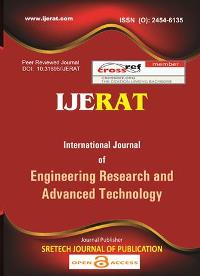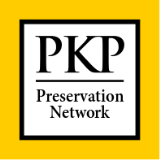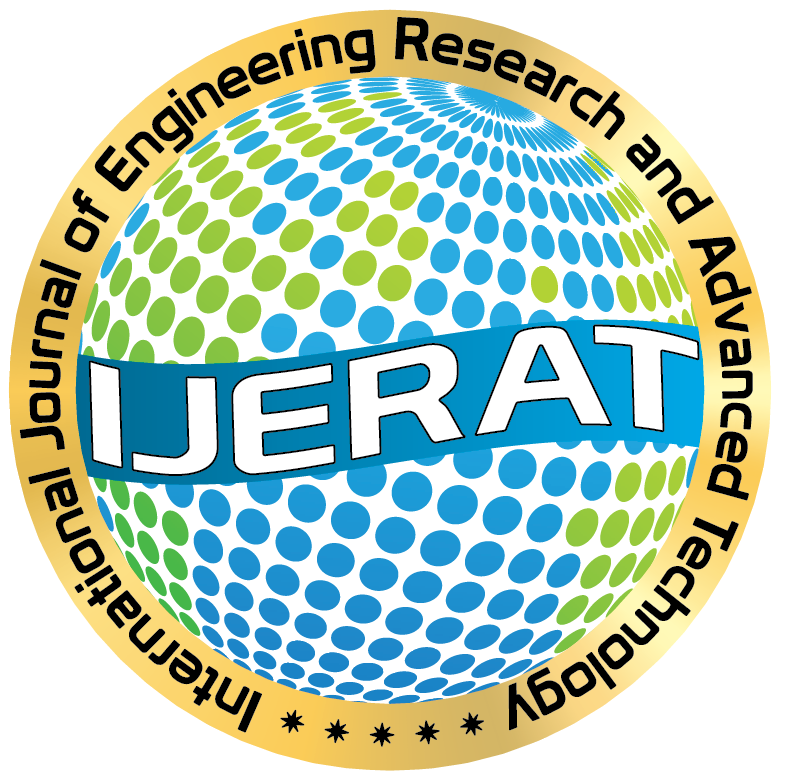Integration of Lean Six sigma in Reducing Waste in the Cutting Disk Process with the DMAIC, VSM, and VALSAT Method Approach in Manufacturing Companies
DOI:
https://doi.org/10.31695/IJERAT.2021.3730Keywords:
Lean Manufacturing, DMAIC, VSM, VALSATAbstract
The Indonesian Manufacturing Company is a manufacturing company that produces two-wheeled automotive spare parts. One of the products currently being supplied to several two-wheeled customers is the disc brake, rear sprocket, and drive sprocket. The opportunity to increase production output adjusted to high customer demand can be done by reducing waste activities. Therefore, an approach with a lean six sigma approach is needed using the integration method of DMAIC (Define, Measure, Analyze, Improve, and Control), VSM (Value Stream Mapping), and VALSAT. This research aims to reduce production waste and reduce cycle time, which affects increasing production output to balance according to customer needs. Waste identification is explained in the Define stage at DMAIC using a big mapping image in Value Stream Mapping. Then a more in-depth analysis is carried out using the VALSAT tools at the Analyze stage, which is supported by WRM and WAQ questionnaire data. The Analyze stage was then carried out by analyzing using the FMEA method. Control is carried out by standardization and outreach to employees. This study aims to identify and reduce waste that occurs in the production area, especially line-cutting disks. Based on the VALSAT analysis, it was found that the four biggest wastes were motion, inventory, overproduction, waiting, transportation, and the process, which had five wasteful activities. First, the chuck design used is still separate; it should be improved by combining the soft jaw and chuck into one component. Second, the accumulation of material after M.H. Drilling is improved by combining inner and outer cutting processes into one process. Third, the counterbore process still uses the manual depth setting method using a micrometer which can be reduced by the process between M.H. Drilling, Counter Bore, and Mounting Hole Chamfering are made into one process, using Brother NC machines using hydraulic clamps. Fourth, the location between the inner and outer cutting machines with the mounting hole drilling is still too far away for improvement, namely, from the line cutting disk layout, a re-layout was made to U LINE. Fifth, human errors often occur during the chamfering process by adding a stopper to the machine to prevent human errors.
References
Amin, Syukron, and Muhammad Kholil. (2013). Six Sigma for Business Improvement. Graha Ilmu.
Syabrina, R, A, N. (2017). Communication Effectiveness and Efficiency in the 2017 Damar Kurung Gresik Festival.
Caesaron, D., & Simatupang, S. Y. P. S. (2015). Implementation of DMAIC Approach for Improvement of PVC Pipe Production Process (Case Study of PT. Rusli Vinilon). Journal of Metris, 16 (2015): 91-96, 16, 1–6.
Fajrian, M. (2018). Application of sifajrianstem value stream mapping to increase the production of spare parts for Mainstand 2SD motorcycles. 10(3), 252–262.
Fatma, N. F., & Pradipta, S. A. (2018). Application of Six Sigma Methodology to Reduce Waste Water Treatment Operational Costs at Pt Clariant Indonesia (Case Study in Chemical Company). 3(2), 59–66.
Fernando, Y. C., & Noya, S. (2014). Production Line OptimizationI With Value Stream Mapping And Value Stream Analysis Tools. Scientific Journal of Industrial Engineering. Volumes 13 (2), 125–133.
Firmansyah, A., Yuliana, L., & Ranata, W. (2020). Analysis of the Implementation of the VSM Method on the Dago Cracker Factory Production System.
Fithri, P., & Sari, R. Y. (2016). Analysis of Measuring Productivity of Alsintan Company CV. Cherry Sarana Agro. Journal of Industrial System Optimization. Volume 14 (1), 138. https://doi.org/10.25077/josi.v14.n1.p138-155.2015
Fitriyani, R., Saifudin, S., & Margareta, K. (2019). Proposed Improvements To Reduce Waste In The Production Process With Lean Manufacturing Methods. PASTI Journal. Vol. XIII (2), 187–201.
Ford Motor Company. (2011). Failure Mode and Effects Analysis, FMEA Handbook (with Robustness Linkages). International Journal of Quality & Reliability Management, 13(5), 286. https://fsp.portal.covisint.com/documents/106025/14555722/FMEA Handbook v4.2/4c14da5c-0842-4e60-a88b-75c18e143cf7
Ganguly, K. (2012). Improvement Process For Rolling Mill Through The Dmaic Six Sigma Approach. Journal for Quality research. Volumes 6 (3), 221–231.
Gautama, P. (2019). Analysis of the Early Stages of Six Sigma Implementation at Tama Kopi and its Implications for Service Quality. InTent Journal. Volumes 2 (1), 85–93.
Hamsinah, H. (2018). The Effect of Productivity, Efficiency and Job Satisfaction on Employee Turnover in the Marketing Division of Lempuk Syako Makassar. Innovation, 5(1), 28. https://doi.org/10.32493/inovasi.v5i1.y2018.p28-46
Hidayat, R., Tama, I. P., & Efranto, R. Y. (2006). Application of Lean Manufacturing With VSM And FMEA Methods To Reduce Waste In Plywood Products (Case Study of the Production Dept. of PT Kutai Timber Indonesia). Journal of Universitas Brawijaya. Vol 5 (2), 1032–1043.
Hines, P., & Rich, N. (1997). The Seven Value Stream Mapping Tools. International Journal of Operations & Production Management, 17, 46–44.
Hospital, I., Medika, A., Lintya, D., & Karima, S. (2015). Use of Lean Concept to Improve Efficiency of Outpatient Pharmacy Installation Services at Anna Medika Hospital Bekasi. Journal of Hospital Administration. Volumes 2 (1), 29–42.
IGAI Mas Pertiwi, Herlambang, F, S, & Kristinayanti, W,. (2019). Analysis of Construction Waste Materials on Building Projects in Bandung Regency. Symmetric Journal. vol. 9(1), 185–190.
Indexed, S., Venkata, G., Rao, P., Nallusamy, S., & Narayanan, M. R. (2017). Augmentation Of Production Level Using Different Lean Approaches In Medium Scale Manufacturing Industries. International Journal of Mechanical Engineering and Technology. Volumes 8 (12), 360–372.
Kholil, M., & Mulya, R. (2014). Waste Minimization And Proposed Increasing Efficiency Of Mcb (Mini Circuit Breaker) Production Process With Lean Manufacturing System Approach (At Pt Schneider Electric Indonesia). Systems Research and Applications and Industrial Engineering, 8(1), 44–70.
Kurniawan, Y., Luhukay, D., & Halim, T. (2014). Development of Accounting Information Systems for Production Processes at PT XYZ.ComTech. Volumes 5 (9), 224–235.
Lestari, K., & Susandi, D., (2019). Application of Lean Manufacturing To Identify Waste In The Production Process Of Knitting Fabrics On The Production Floor Of PT . XYZ. Proceedings of the Industrial Research Workshop and National Seminar. Volumes 10 (1), 567–575.
Lisano, N., Susanty, A., (2016). Analysis of Waste Waiting in Full Hard Product Manufacturing by Using Process Activity Mapping in Cold Rolling Mill Plants. E-Journal of Industrial Engineering. Volumes 5 (2), 1–7.
Muflihin, H. M. H. (2009). Employee Work Productivity Assessment. Journal of Educational Alternative Thinking. Journal of Educational Alternative Thinking. Volumes 14 (2), 1–9.
Muhammad, Z. Z. Z., & Yadrifil, Z. Z. Z. (2018). Implementation of lean manufacturing system to eliminate wastes on the production process of line assembling electronic car components with WRM and VSM method. Proceedings of the International Conference on Industrial Engineering and Operations Management, 2018(JUL), 150–166.
Natalia, M,. Partawijaya, W,. Mirani, Z,. (2017). Analysis of Contruction Waste Risk Factors in Construction Projects in Padang City. Civil Engineering Scientific Journal Volume XIV Number 2, October 2017 ISSN: 1858-3695. XIV, 39–45.
Pradana, Y. S.P., Handayani, N. U., & Suliantoro, H. (2017). Analysis of Material Waste in the Production Process of 240ml Aqua Packaging At Pt . Tirta Investama. Volumes 6 (2) 1–9. https://ejournal3.undip.ac.id/index.php/ieoj
Profile, S. E. E. (2016). Enhancement of Productivity and Efficiency of CNC Machines in a Small Scale Industry Using Total Productive Maintenance Efficiency Enhancement in CNC Industry using Value Stream Mapping , Work Standardization and Line Balancing. August. https://doi.org/10.4028/www.scientific.net/JERA.25.119
Purwanto, A. B., & Wulandari. O. (2016). The Effect of Motivation, Compensation and Work Environment on Employee Work Productivity. Journal of Business & Management. Volumes 02 (01), 9–26.
Rawabdeh, I. A. (2005). A model for the assessment of waste in job shop environments. International Journal of Operations & Production Management, 25 No 8.
Ristyowati, T., Muhsin, A., & Conscience, P. P. (2017). Minimization of Waste in Production Process Activities With Lean Manufacturing Concept (Case Study at PT. Sport Glove Indonesia). Options, 10(1), 85. https://doi.org/10.31315/opsi.v10i1.2191
Salamah, G., & Dan, I. (2012). Waste minimization (waste) using a value stream analysis tool to improve production time efficiency (Case study: PT Barata Indonesia). Volumes 1 (1), 1–6.
Sasongko, R. N., Sianto, M. E., & Gunawan, I. (2019). Speaker Assembly Path Simulation To Improve Production Line Efficiency. Scientific Journal Widya Teknik. Volumes 18 (1), 1-10.
Satria, T., & Yuliawati, E. (2018). Lean Manufacturing Design Using Waste Assessment Model (WAM) and VALSAT to Minimize Waste (Case Study: PT. XYZ). Volumes 7 (1), 55–63. http://dx.doi.org/10.26593/jrsi.v7i1.2288.55-63
Shodiq, M., & Khannan, A. (2015). Analysis of Lean Manufacturing Applications to Eliminate Waste in the Analysis of Lean Manufacturing Applications to Eliminate Waste in the Production Line of PT Adi Satria Abadi. April, 47–55. https://doi.org/10.26593/jrsi.v4i1.1383.47-54
Sudin, A. G. S. A. (2004). The Effect of Manufacturing Strategy on Performance (Study on Medium and Large Manufacturing Industries in Yogyakarta). Manaratha Management Journal. Volumes 3, 1-18
Vinilon, P. T. R., Caesaron, D., Simatupang, S. Y. P., Studies, P., Industry, T., & Technology, F. (2015). Implementation of the DMAIC Approach for Improvement of PVC Pipe Production Processes (Case Studies. 16, 91–96.
Yosan, R. B., Kholil, M., & Purwanto. (2014). Company Productivity Measurement Using Objective Matrix Method. IENACO National Seminar, 215–223.
Downloads
Published
Issue
Section
License
Copyright (c) 2021 Muhammad Kholil, Jakfat Haekal , Adizty Suparno , Muhammad Rizki , Tri Widodo

This work is licensed under a Creative Commons Attribution-NonCommercial 4.0 International License.









